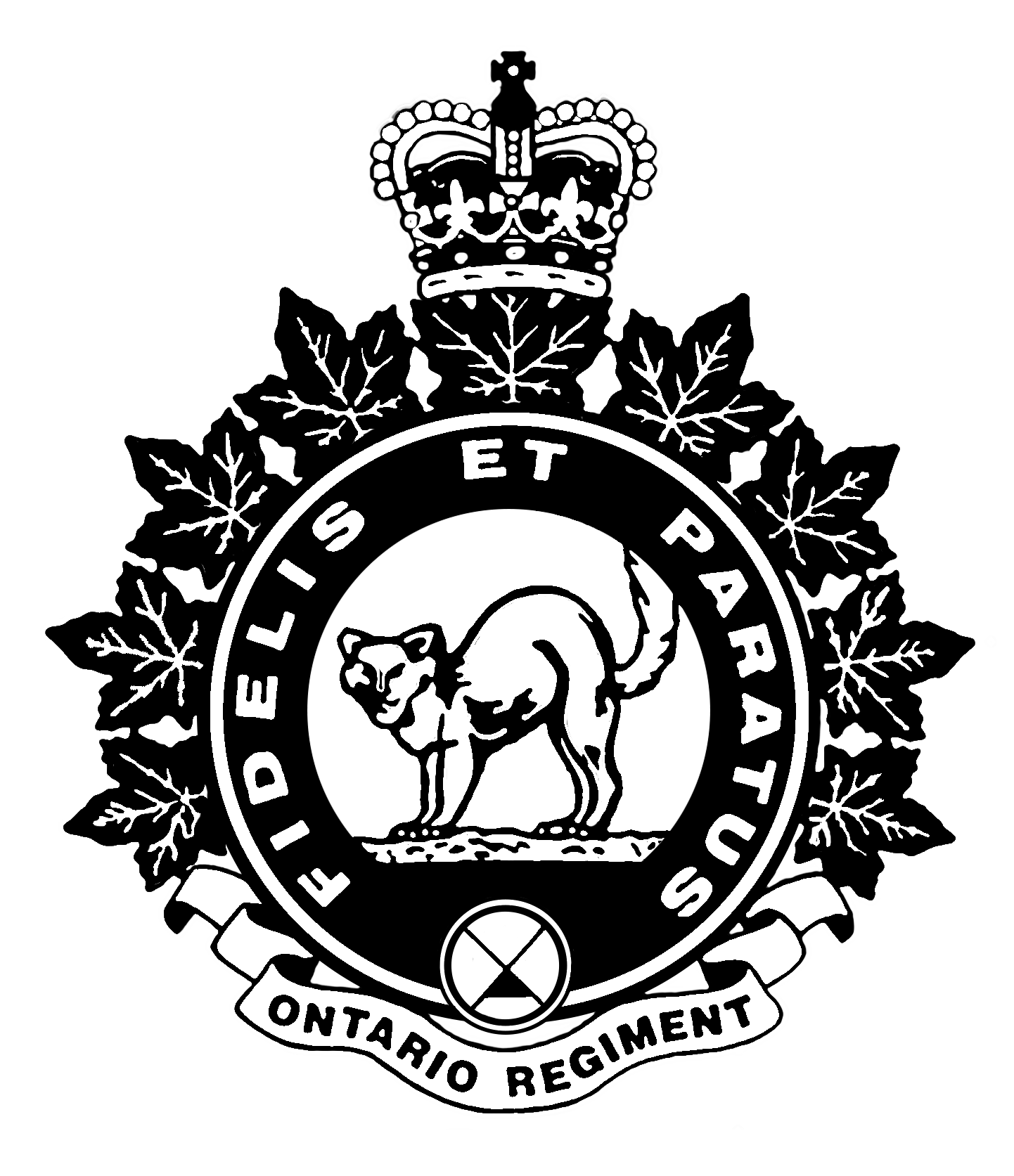The naval convoy carrying the members of the Ontario Regiment, their vehicles, and kit arrived at Siracusa harbour in the mid-morning of 13 July 1943. Due to crowding in the harbour, the Ontarios waited offshore until their turn arrived at 17:30 hours and they began unloading their tanks. The crews traveled south of Siracusa to the 1 st Canadian Armoured Brigade concentration area in an almond grove near the town of Cassibile.
The Ontario Regiment formed part of the Eighth Army Reserve, waiting until the offensive required their support. De-waterproofing the tanks and conducting vehicle maintenance was the first priority. The Ontarios had their first vehicle destroyed during this period of waiting when the scout car carrying Captain Harry F. Millen and Trooper Louis Rychkoski backed over a mine. Neither soldier was hurt, although Trooper Rychkoski was blown into an olive tree.
The order to move came late on the evening of 19 July, and at 05:30 hours on the 20th the tanks were rolling north to their assigned positions overlooking the Catania Plain, 4,000 yards south of the Gornalunga River. The Regiment stayed in this position until 23 July, when they moved to new positions along the Gornalunga River. Here the Regiment was tasked with supporting the anti-tank screen of the British 5th Division on its right and to prevent the enemy from attacking the southern flank of the British 51st Highland Division. During their time in this location the Ontarios positioned two squadrons forward and the third squadron in reserve, rotating their locations each morning.
The first death since sailing for the war zone occurred on 24 July when Trooper Bert E. Ashby, a prewar truck driver from Oshawa, was accidently shot on board the ship Empire Nerissa. He was among a group of Ontarios who were unable to land with the main body in July because of a broken crane on the ship.

The Ontarios were placed under the command of the 13th British Infantry Brigade on 30 July. The 13th Brigade was tasked with defending the bridges at Stimpato and Sferro. The move to the new positions took place that evening and the Regiment’s squadrons were dispersed appropriately to support the infantry.
On 2 August the first shots were fired by an Ontario Regiment tank. Trooper Michael Corrigan, the gunner in a tank commanded by Captain Leonard Knowles, shot up a haystack that concealed an enemy mortar position.
Over the next nine days the Ontario Regiment continued to support the British infantry during a north-easterly advance. The tanks’ guns were used to destroy enemy anti-tank guns, machine gun and mortar positions. A pattern emerged of the Germans putting up a fight as the British attacked, losing a position, counter-attacking and then finally retreating to the north-east. The British pursued the Germans, with the Ontarios supplying the tank support. On 6 August the town of Paterno fell to the Allies and the Ontarios were surprised by the enthusiastic welcome they received from the residents. The first battle casualty suffered by the Ontarios occurred when Sergeant Harold F. Brown of “B” Squadron was shot in the leg on
8 August. While fighting off a German counter-attack on 10 August, Lieutenant Arthur W. Hawkins claimed to have destroyed a German tank – the first tank kill for the Ontarios in the war.


On 11 August the 13th Infantry Brigade was relieved by the British 15th Brigade. The Regiment moved to their old harbour area at Monte del Casale that night, but not without incident as German aircraft bombed the harbour area, setting ammunition stocks on fire. Trooper Richard A. Burry of New Toronto, Ontario, the Ontarios’ first fatal casualty in Sicily, was killed and two were wounded as a result. He was the last Canadian to die in Sicily as a result of enemy fire.


The Ontarios settled into a period of maintenance for most of the remainder of the month. There was time to relax with swim parades, baseball, movies and a brigade sports meet which was won by the Ontarios. The tank harbour area was far from ideal, however. It was hot, dusty, fly-infested and lacked any kind of shade. Malaria, dysentery and typhoid were rampant and infected many members of the Regiment. Despite the end of combat in Sicily there were still dangers. On 20 August “C” Squadron commander Major Herbert E. Irwin, a banker from Whitby, ON, lost his left arm when his scout car drove over a mine, blowing the vehicle on its side.
General Bernard Montgomery, commander of the Eighth Army, visited the Ontarios on 27 July and again on 20 August. On both occasions he met with the troops.

The Regiment suffered another fatality on 25 August. Trooper Frederick S. Jarvis, an “A” Squadron member originally from Sault Ste. Marie, Ontario, was killed when the tank he was riding in hit soft ground and turned over, throwing him from the turret.

Sicily proved to be an effective introduction to combat for the Ontarios. Rather than being thrown immediately into battle in a full-scale invasion they were able to ease into battle slowly and methodically.
Many lessons were learned that would pay off in the next phase of the war.
During the last week of August, preparations were being made for the invasion of the Italian mainland. Tanks were waterproofed, maps were distributed and briefings on the coming campaign were held. The tanks began loading on the Landing Ships Tank on 30 August at a concentration area near Catania.
The Ontario Regiment received two battle honours for their actions in Sicily: “Pursuit to Messina” and
“Sicily, 1943.”
Rod Henderson
Rod Henderson is the Regimental Historian of the Ontario Regiment. He served as a Sergeant in the Regiment and is the author of “Fidelis Et Paratus: The History of The Ontario Regiment RCAC”.

